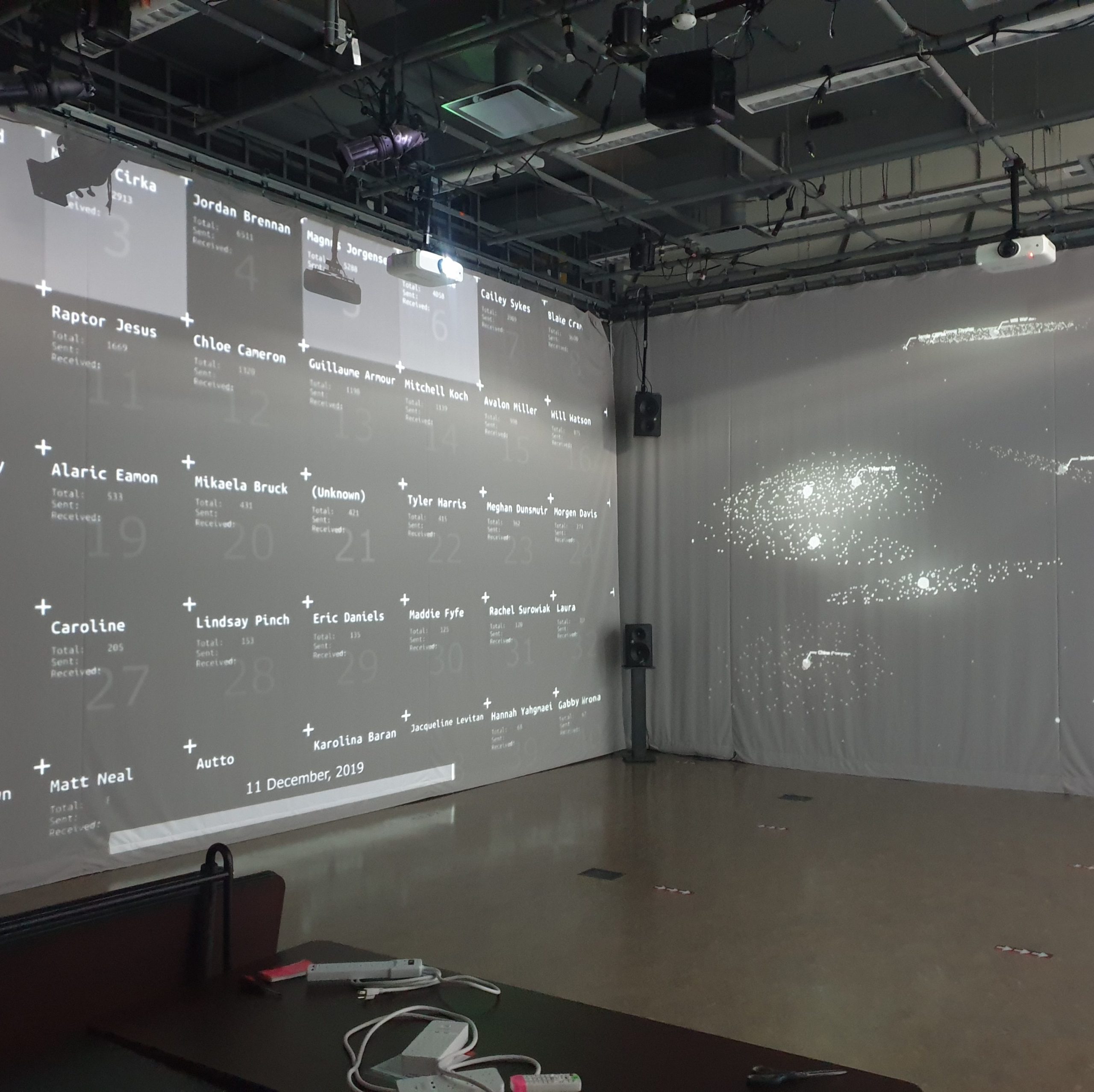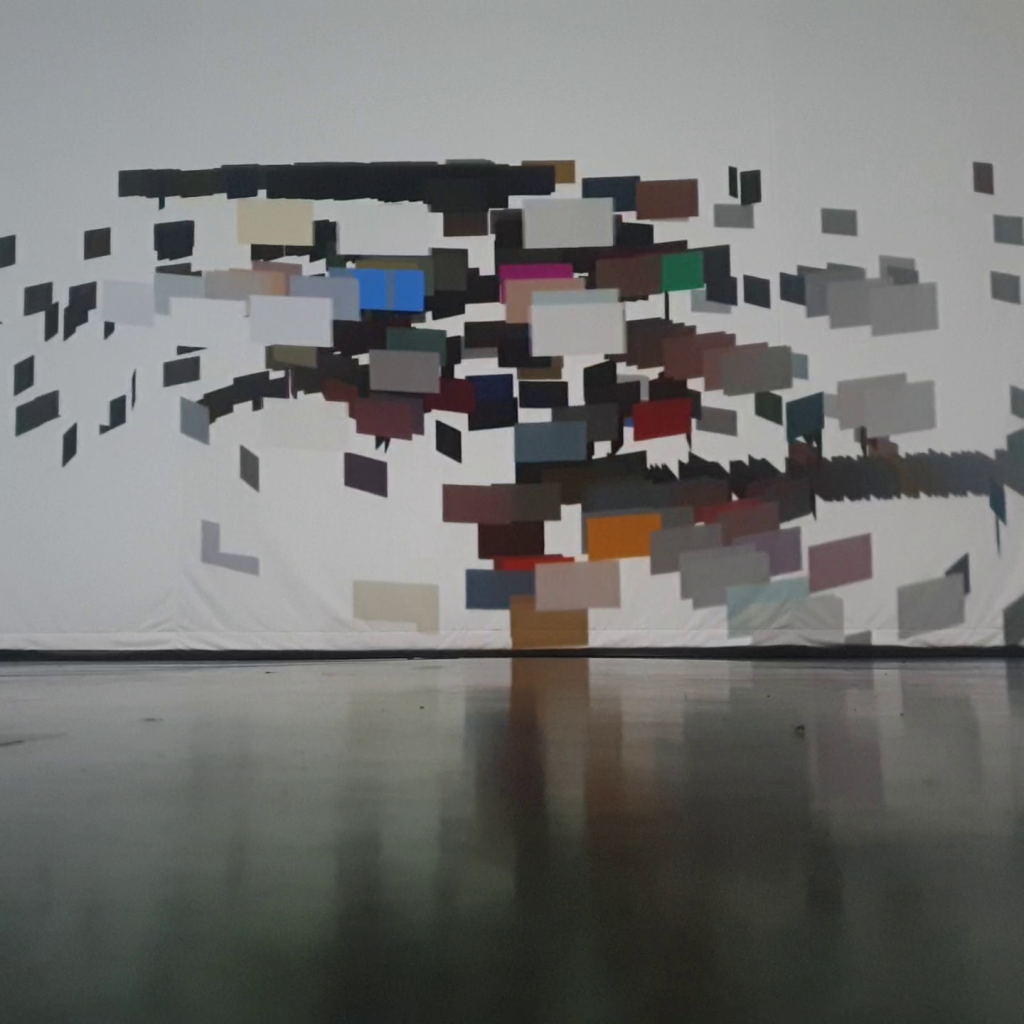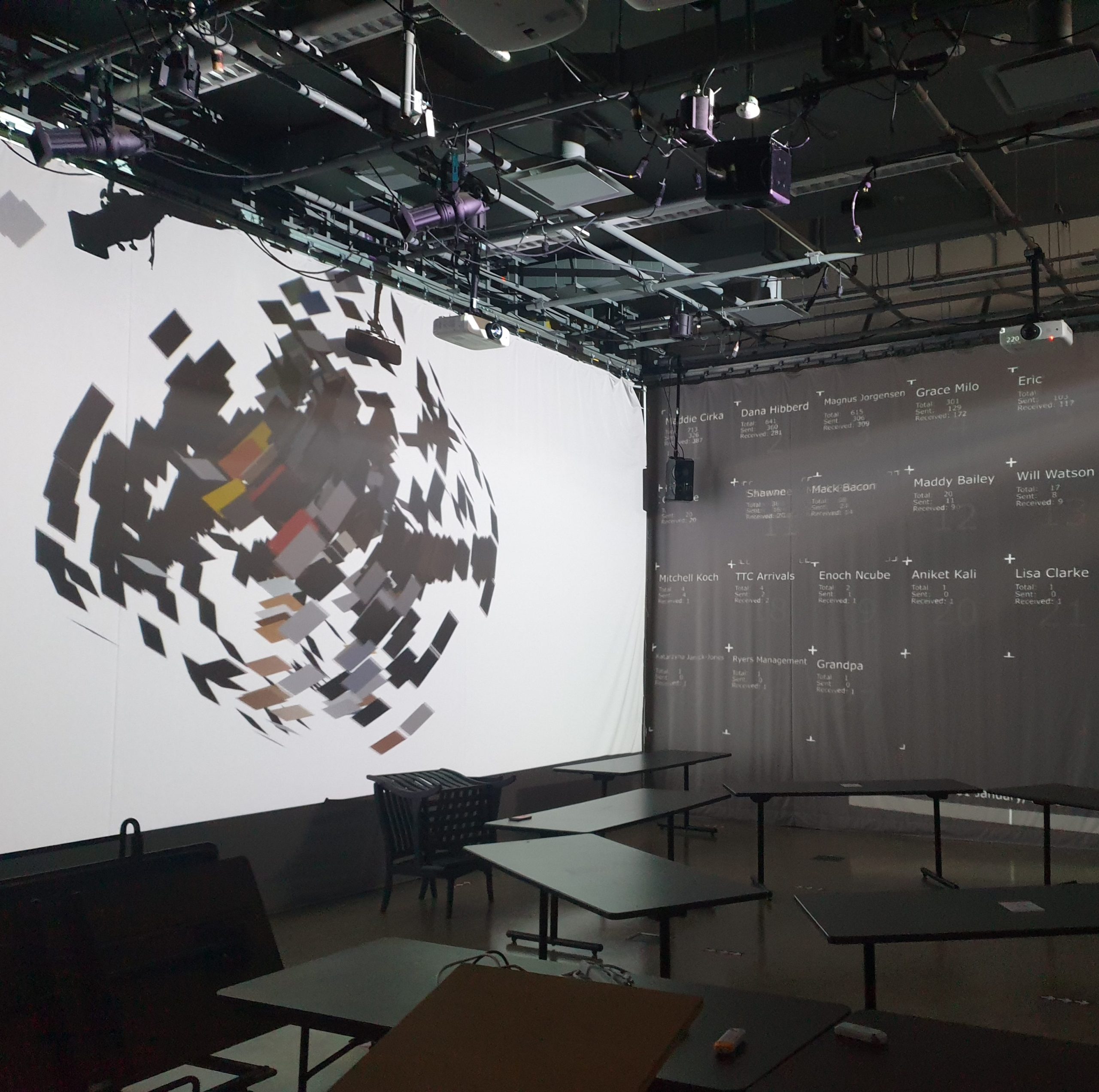Voice in the Data is a series about data, relationships, and memory.
Contents:
Following the creation of UNMASK, I spent a lot of time away from my usual methods of creation. I branched out further into studying documentary media, and the methods of storytelling that it held.
The Essay Film style was fascinating to me. Finding a more subjective voice in what is usually considered an objective media. I began to think about how to “rebuild” from the distorted mess of memories that I expressed through UNMASK, and returned to an older data visualization project, Text Based Life.
During this time, the COVID-19 pandemic began. I was locked in a room with my computer, and all of the data I had ever created. I wondered how I could construct a form of story out of that, and how I could combine the objectivity of data visualization with the subjectivity of the essay film style.
Over the course of the next year, I created a series of prototypes, coming together into an immersive installation piece, spanning nearly a decade of my life in data.
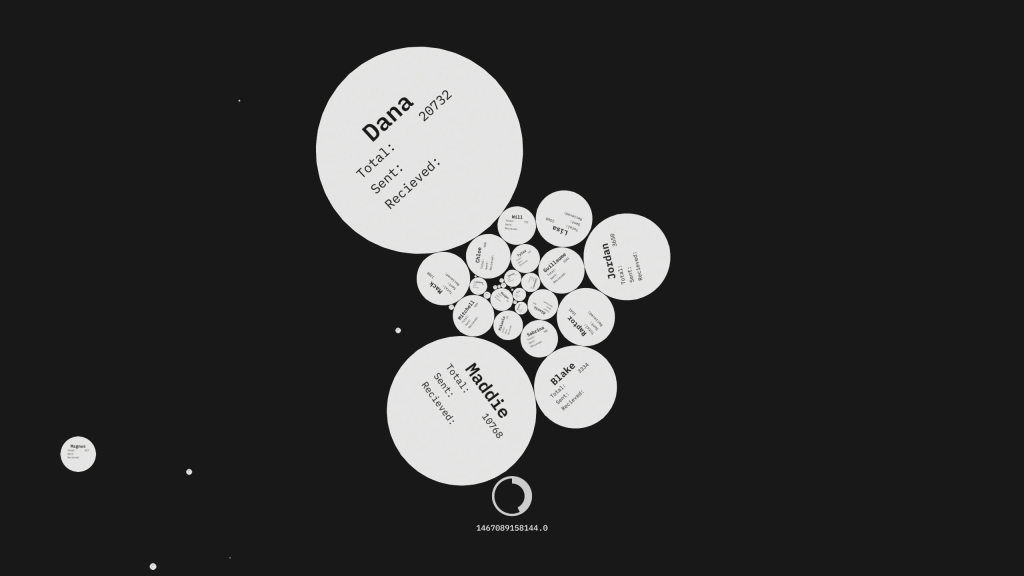
Contacts – The Basis of Information.
There are ethical roadblocks that come from working with *very* personal data sets. You cannot show the actual messages themselves without consent from both parties.
This becomes a challenge when you have hundreds of conversations, some of which with people you don’t particularly want to talk to again.
But sometimes limitations create something even better. Without the messages, there is just the metadata. The information about the information.
The viewer is free to construct their own story of the relationship between these two people, just based on how often they message each other, and when.
I knew this to be effective from Text Based Life, but watching it happen over time added a new dimension.
The original iteration was a grid of tiles organized by the total number of messages with the contact. This was changed to the bubbles floating in space to better match the circle motif of the project, as well as give a better context for the difference of scale in messages between contacts.
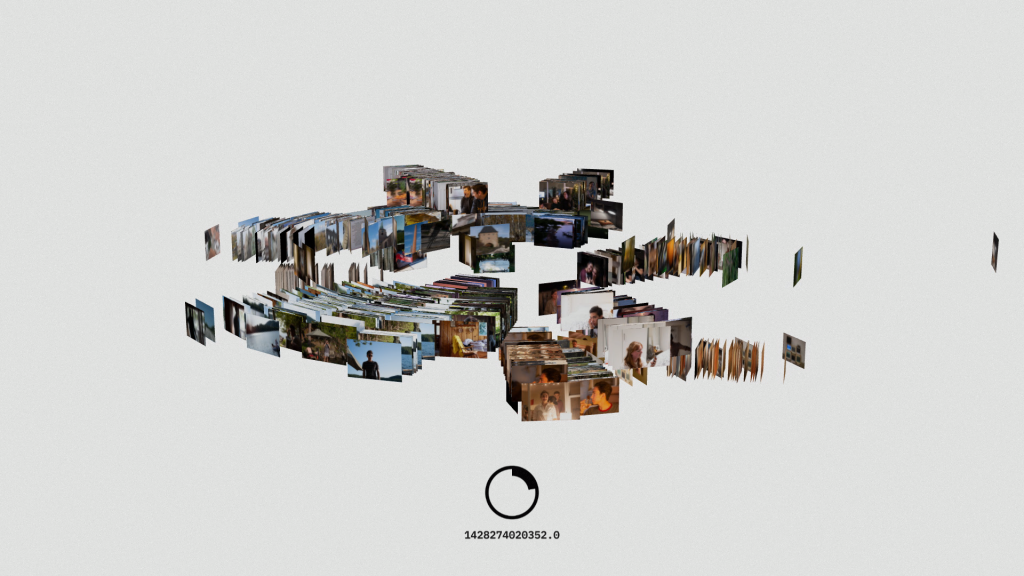
Vortex – A Storm of Photos.
Messages contain a lot of history. They are the only method of communication I use when I am not physically in person with someone, and I want to have a conversation with them. But they don’t tell the full story.
If you were to only use messages to tell a story, there would be large gaps where it would appear that no conversation was happening, when in reality it was because you were with them in person.
Vortex attempts to fill in those gaps by showing every photo that was taken in the same timeframe as the messages. All thrown into a constantly swirling mass of memories. Snippets of time, some planned, and some not. Utility and momento are near indistinguishable at times, with only a few moments being truly legible in the torrent.
Ethical limitations prevented photo tagging, but that itself lends itself to questions of how much the tagging matters. If you don’t know these people, or their names and faces, then who’s to tell you you’re wrong for misidentifying them?
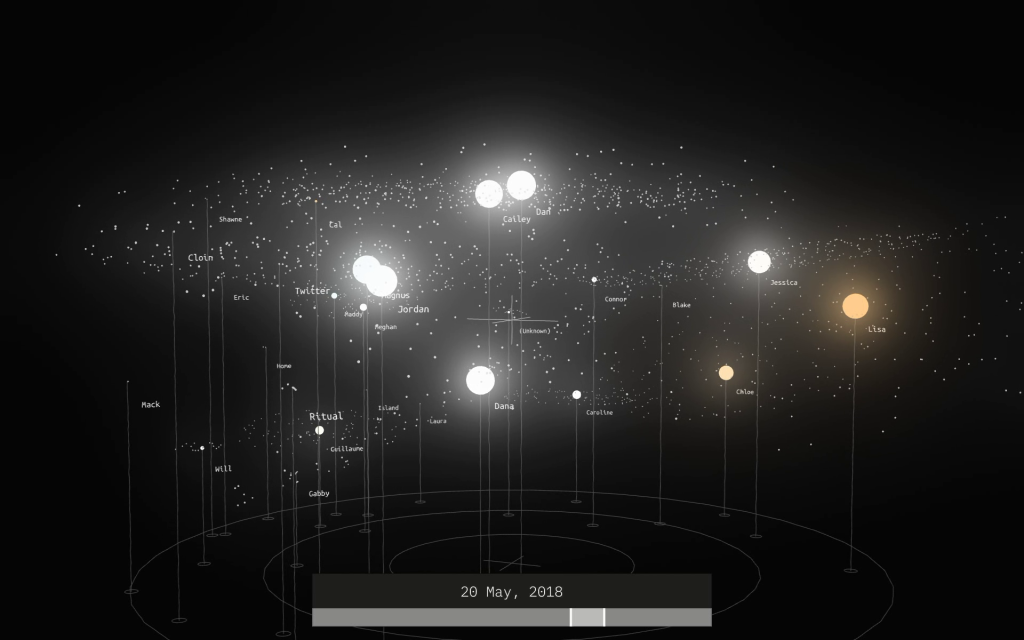
Galaxies – As Faces Come and Go.
Returning to the messages, but presenting them in a different way. Galaxies shows the messages within a 3 month span, with each message as a star that comes to life, then burns out.
Some of the galaxies are sustaining, staying steady throughout the timeline presented, while others come in bright, and burn away. Others will disappear for years only to come back again.
It was create to provide an additional layer of context to Contacts, and better paint the story of the relationships between these people.
In further versions of the installation, this piece is replaced by another that is still a work-in-progress.
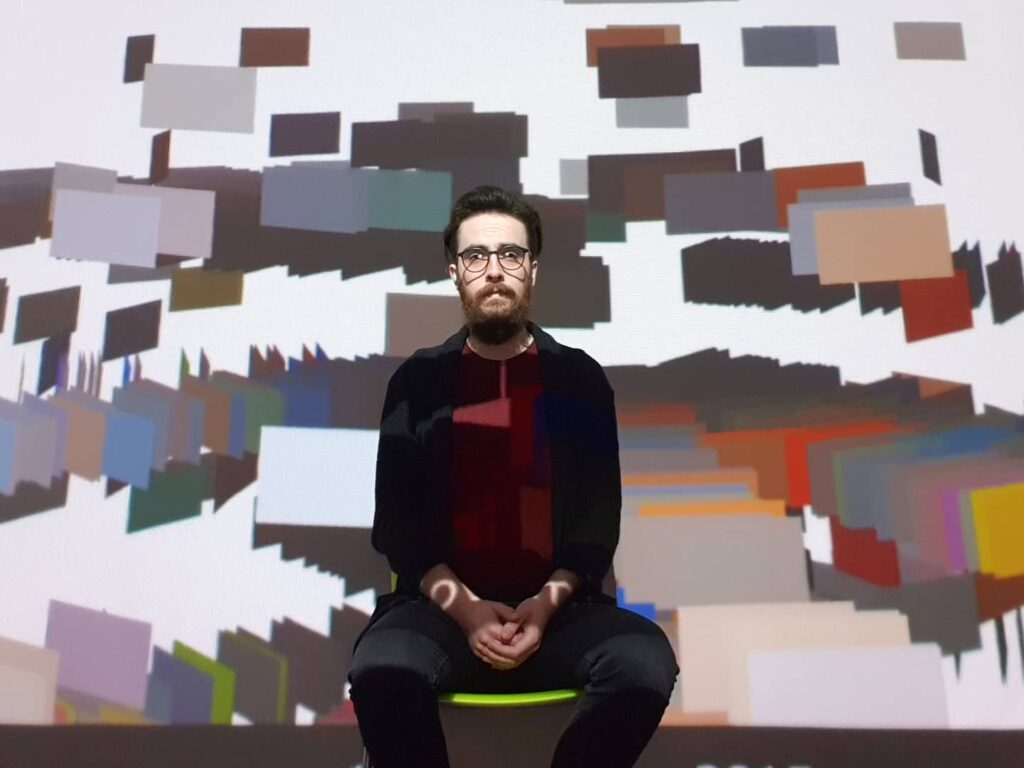
Installation + Process.
Building an installation like this is a grueling and repetitive process. There is constant revisions and ammedments that make it hard to pin down what is “done”.
The images here are from the first installation that I’ve refered to as the “beta” of the project. None of the visualizations were entirely finished, but they were done enough to a point where they could be projected and modified based on how they looked.
This installation proved fruitful, giving me context I needed to develop them further, and bring them to a level they would not have reached otherwise.
It was a strange process of installing. This was done in the height of COVID lockdowns in Toronto, so the entire time I was installing, I didn’t see another person. I was alone in a giant room, with nothing but my own memories to keep me company.
An interactive element was born of this, from scrolling the timeline back and forth while testing, there was an interesting sensation to scroll through the memories like that, and be able to stop and rewind. It gave the installation more of a feeling of a machine being operated than something just happening in front of you.
Eventual versions will feature a center “terminal” where the viewer can zoom in on specific features and people, and move through time as they wish.
